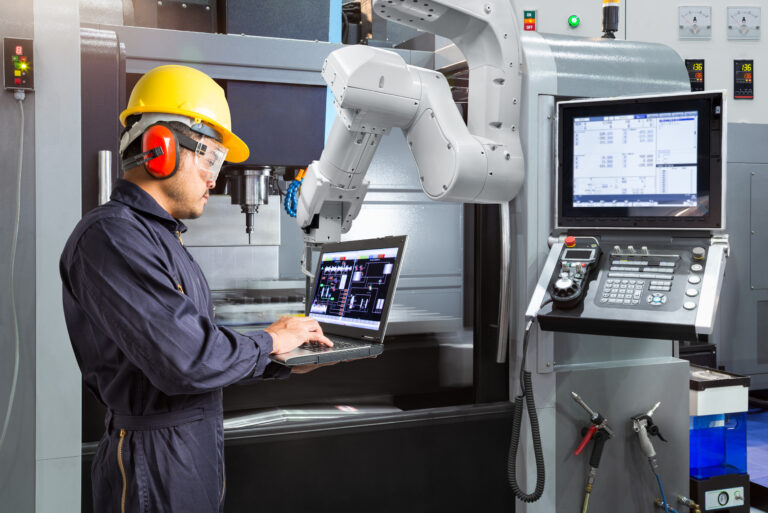Custom-designed automation equipment From a solitary stand-alone welding station to a fully integrated assembly, inspection, and packaging line that fills an entire facility, to many points in between, custom automation is designed to meet specific goals unique to each manufacturer. For this reason, it’s essential to partner with an automation integrator who understands your needs and can guide you through various options to a system that is right for you.
No matter the size of your company or automation project, the same elements go into the custom design process. Here’s what to expect.
1. Determine Goals and Priorities
You are more familiar than anyone else with the details of your manufacturing processes, materials, tolerances, quality goals, etc. An automation integrator’s first and most important job is to understand these details and goals.
Depending on what you hope to achieve by adding robots and automation equipment to your facility, the integrator will have a different approach and use different equipment. Some of the goals that influence design include:
- Reducing production time and labor costs
- Minimizing or eliminating human error
- Improving quality and consistency
- Integrating robotics with CNC and other production machinery
- Adding automated inspection
- Incorporating automated packaging systems
Discussing these and other priorities with your integrator early in the process helps ensure the final system does what you expect.
2. Planning for Flexibility and Expansion
Product lines and manufacturing processes change over time, and your integrator may be able to design and build a system that allows for this. For example, using collaborative robots that can be reprogrammed on-the-fly and redeployed to other tasks can help you get more use out of a robotic arm. Or a work cell can be constructed with expansion in mind with one removable wall where a second or third arm can be added in the future.
Even if you don’t anticipate making changes to the system in the future, your integrator can be a good source of information for training, troubleshooting, and ongoing support. As experts in robotics, fixturing, and programming, they can make sure your equipment continues to meet your needs.
An automation project is an iterative process that requires a partnership. Both parties need to understand that systems occasionally require an adjustment, and what worked with one set of inputs and tasks might cause challenges with another. By communicating early and often, you can minimize downtime and frustration all around.
3. Create Drawings and Computer Models to Show How the System will Work
After the process steps are detailed, it’s possible to create a “design map” or flow chart to visualize the whole thing. With this map in hand, the integrator can create drawings and models that show exactly what types of arms, end-of-arm tooling, fixtures, conveyors, and other equipment will be used. Safety features like guards, sensors, and gates are also included.
4. Review the Design and Make Adjustments
You’ll have a chance to review all drawings and models and provide feedback on the proposed design. Remember that you’re the expert on your process, so if you’re unsure how parts of the system will work or have concerns about up and downstream workflow, the integrator needs to hear your input. Don’t attempt to change the scope of the project, but do make sure that parts and tasks will be processed for the right outcome.
It’s important to remember that an integrator may propose a modification to part design or the order of operations in order to create an efficient automated system.
In some cases, an automation system designer will build and test the customized system in their own facility. After runoff testing, the equipment is shipped to your facility for installation, final runoff testing, and employee training.
Force Design brings 20-plus Years of Industrial Automation Experience to Your Project
Force Design’s experienced team will be behind your automation project from the planning stage well into the future. We ensure that an automation solution will modernize and enhance your production process.
Designing custom automation equipment is not simple. Look for an integrator with the experience to provide the best automation strategy for your needs. That’s exactly what we do!
Contact Force Design today for a customized automated system as unique as your production process.



